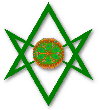"Like a fish out of water . . ." goes the saying, referring to one being in a situation that one is not properly adapted to. But if the fish had never gotten out of the water in the first place, you and I would not be here today. Unless of course you subscribe to the mythology that the hairy thunderer created it all some 6000 years ago, fossils and all. But we shan't dwell on such trivial humanistic beliefs concerning our cloudy past. Instead we should be looking ahead into the future when we can set the Earth straight, and put all that nasty industrial crap where it belongs - off the planet. In the first article of this series, we looked at technology in space. But what about biological systems? And not just the obvious ones like ourselves, but other critters and plants too. DNA on our world is synonymous with life. You might say it is the data of our being, for locked within our genes are multi-multi-gigabytes of information stored like some massive computer hard drive. This life program determines how we look, function and some would say behave. But what if there were other variables? Several years ago, a major university conducted an experiment with chickens. I think the premiss was something like; "What would a chicken from Jupiter look like?" To find out, they build a cylindrical chicken coop that functioned like that famous centrifical sickness machine at the carnival, the "tilt-a-whirl". The tilt-a-whirl for those who don't know looks kind of like a ferris wheel on it's side. The riders line up in little cages around the rim so that as this thing spins, the riders are held against the sides by the force of the spin - even as it "tilts" up. But the chickens got to ride free - for their entire lives! Their Tilt-a-whirl rotated continuously at a rate calculated to simulate a world with a gravity SIX TIMES that of the Earth. They survived, but they didn't look like chickens. They were short, stalky with VERY thick stubby legs. This is the reverse of what happens to our astronauts in microgravity when they start losing bone calcium. The obvious conclusion: The same genetic program produces very different results when given a different set of environmental variables in which to operate. Chickens (or humans) raised from birth in microgravity would develope as tall, thin wispy looking critters. Needless to say, those microgravity space chickens would crush themselves from their own weight like whales out of water if returned to Earth. This is why we will need artificial gravity for extended stays in space. And humans raised on the Moon? Same thing on a lesser scale - a trip back to the home world for a "Moonling" would mean a wheelchair at best. For this reason, and other economical ones, most, if not all of our future deep space explorers of tomorrow will be people that will not mind returning to Earth in wheelchairs, since they will have left them behind to begin with. Imagine yourself with no legs. Reliant upon this chair to move around. But in space, legs are not needed. Indeed, a ship manned with double amputees could be smaller and use less energy because it wouldn't need the bulky artificial gravity devices. "...So we chop off the legs of our Astronauts..." you say. Not required. We already have lots of people who already lack the limbs of Gravity People. Ask any legless or paraplegic kid in a Shriner's hospital if (s)he would like to be an Astronaut. This could start a new offshoot of humanity as more cripples leave the confines of the Earth's gravity well for the free-floating created worlds of space. These people will GLADLY give up gravity, and after several generations may well start looking like the human-whale beings from Frank Herbert's Dune - the "Navigators." But what about trees in space? Picture a rotating coffee can about a mile in diameter and a mile long. The rotation is set to produce maybe one third of Earth's normal gravity. Position the can so that the sun is shining in through the top, and mirrored panels reflect the light onto the inside surface for "day," and close up for "night." Of course we make our coffee can, (we'll call it "Folger's") air tight and fill the atmosphere with a plant-loving high CO2 content. Then we plant trees. Here we have the perfect controlled environment for forestry. No gypsy moths, no spotted owls, just a nice consistent spin with perfectly controlled day, night and air. The result here would be perfectly formed lumber grown to virtually any size: (The less gravity, the bigger the tree). The grain would be even; variables like weather, fires and the like would not exist. And a crew of legless lumberjacks would harvest them for export back to Earth. Of course the saw mills would be better off up there too. None of this shipping-the-raw-spacelogs-to-Japan crap. It would be much more economical to mill them in orbit and shuttle the finished lumber back down. So there you have it. As we watch species become extinct down here, future worlds off our world will no doubt give rise to many more new types of life. Human and otherwise. Next: The Global Economics of a Spaced-Based SocietyDo feel free to duplicate and disseminate the above file as long as it is not modified in any manner or any fee is charged for it. The material contained within may well be considered bull by many, blasphemous by some or a great idea for a science fiction story by others. But regardless, it remains my intellectual property and should not be duplicated without my permission except as outlined above.© 1986 by R. D. FrederickReturn to the Ramblings Page |
